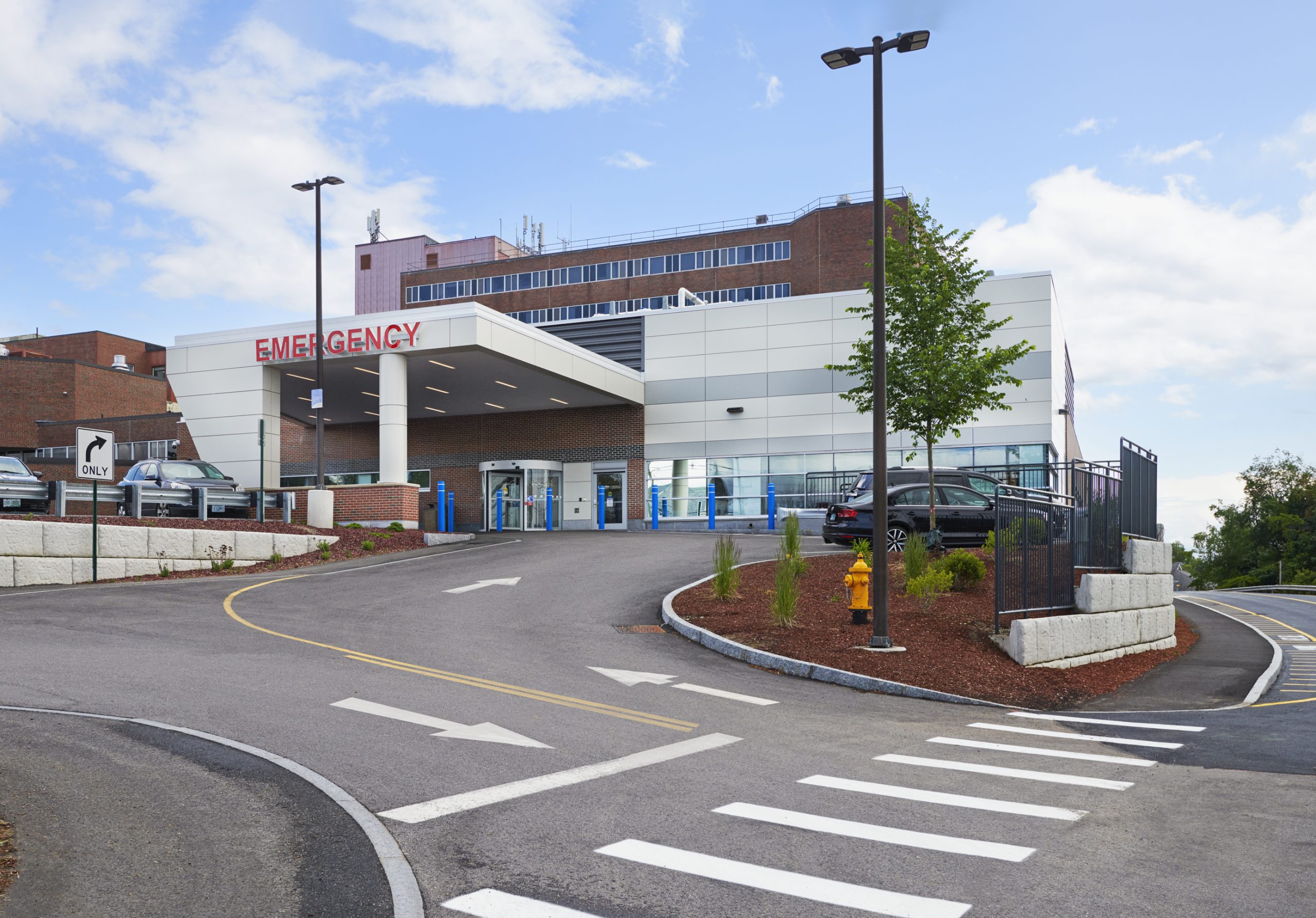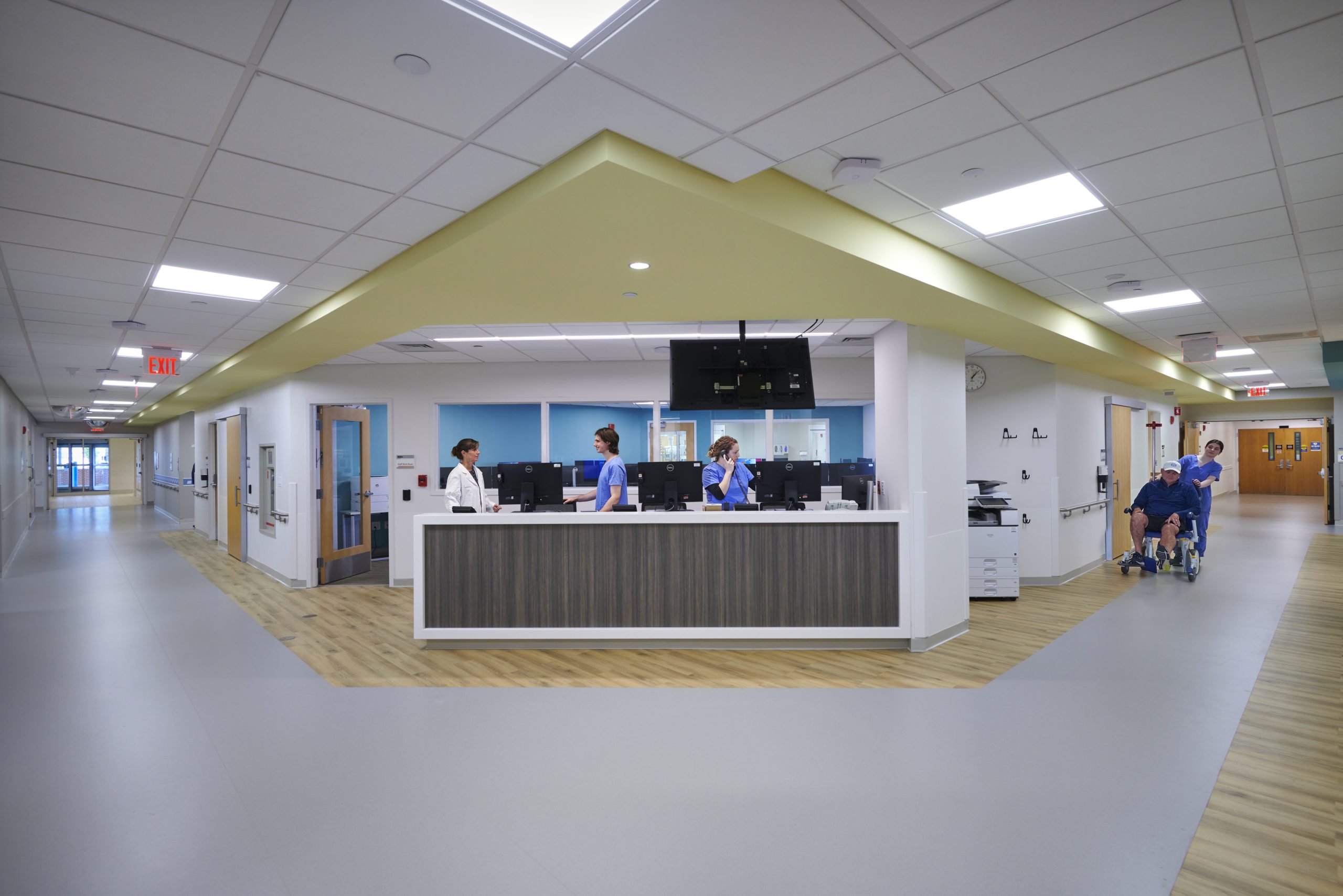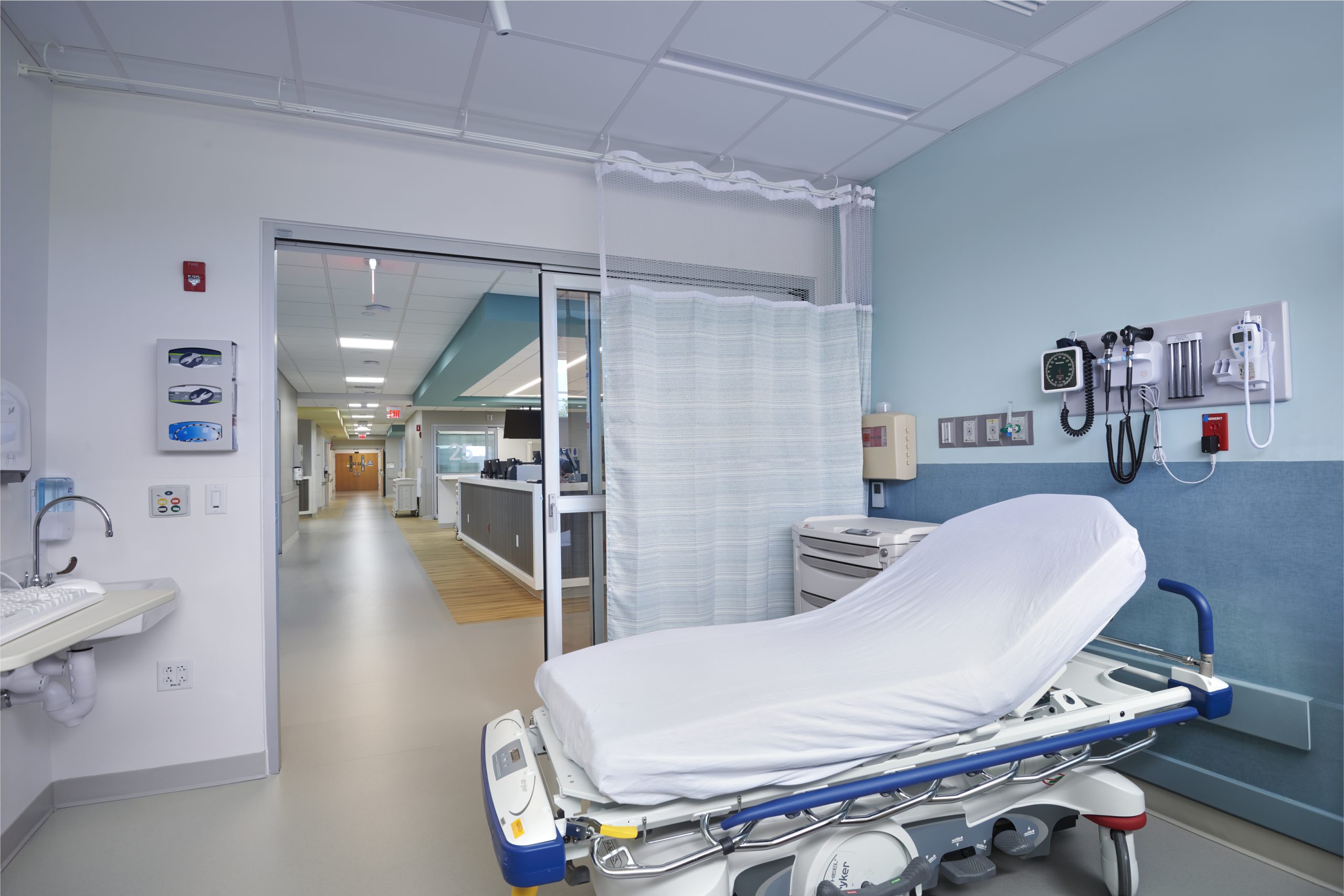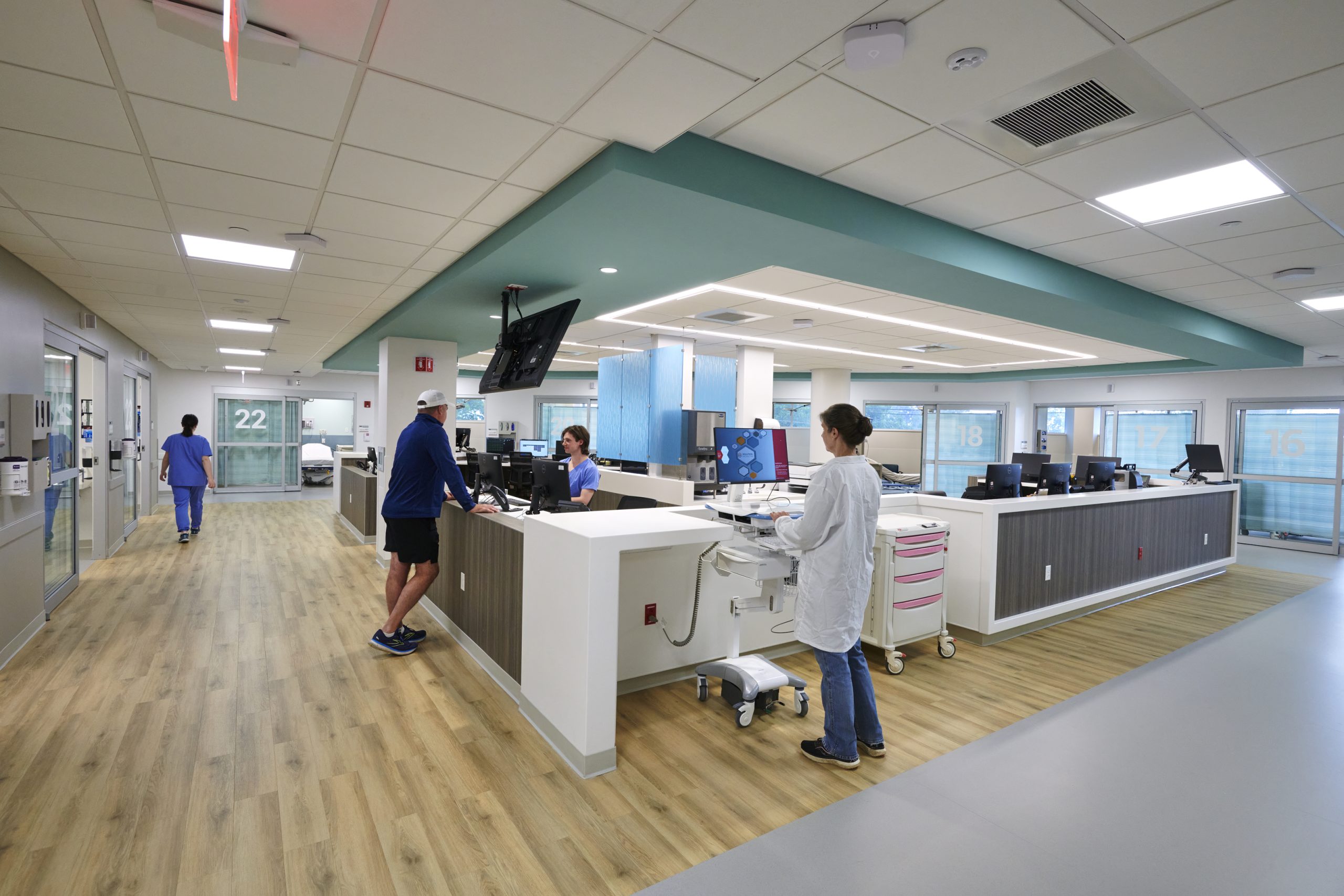SITUATION:
While on campus building the Solinsky Center for Cancer Care at The Elliot, BOND Building simultaneously provided preconstruction for an Emergency Department (ED) expansion. Needing more space and efficient workflows to optimize patient care, the hospital tapped the design build team of BOND Building and a design team led by e4H Architecture. During preconstruction, BOND Building provided budgeting, feasibility analysis, scheduling, phasing options, value engineering, logistics, as well as documentation in support of City of Manchester (NH) and hospital board approval processes. Celebrating with a groundbreaking in June 2021, BOND Building has now begun construction management of the phased addition and partial renovation. When completed in early 2023, the expansion will house acute treatment, a Level II Trauma Suite (the only in the state), nurse station and staff areas, reception and waiting areas, support spaces, and an X-ray machine.
CHALLENGES:
- Population growth in Greater Manchester and new healthcare technologies require expansion to maintain exceptional patient care.
- Embracing a ‘seconds count’ motto in the emergency department, clinicians needed more optimized spaces.
- Building the new ED on site of parking and at the entry while maintaining the existing ED’s operations is crucial.
- Construction was set to begin in March 2020, but delayed by the COVID-19 pandemic.
SOLUTIONS:
- Providing safer, more efficient care areas required more physical space. After exploring several options, hospital leaders agreed to a new 22,000 SF addition to the existing ED.
- Clinicians’ input was critical to achieve the highest quality and safest patient care and Elliot’s ED team collaborated in all design phases. Mock-ups of an exam and a trauma room were built and HoloLens used so providers and nurses could “live and feel” the space and provide feedback on the design.
- Through detailed planning, a phased approach was developed which along with continual communications with Hospital staff, allows the project team to work safely adjacent to the active ED.
- The project’s COVID-19 delay allowed the team time to revisit the design. Based on what was being learned from the pandemic, several changes were made to the reception area, waiting room, and triage areas, as well as the ventilation and exhaust system.
RESULTS:
- A total of 32 private exam rooms, three trauma rooms, and nine rapid triage and treatment (RTT) chairs will be added, allowing 8,000 more patients to be treated annually in the state’s busiest emergency department.
- This new facility will have the most advanced technology available which will improve patient flow and throughput and the overall care experience for patients and their families.
- Our goal is to have no disruptions when it comes to patient care. The hospital added free 24/7 valet service at the ED entrance to help make it as easy as possible for patients.
- Design modifications incorporating COVID-19 Lessons Learned will keep Elliot’s patients safer and healthier by allowing the hospital to isolate infectious patients, increase ventilation and air filtration systems, and add more oxygen ports.



